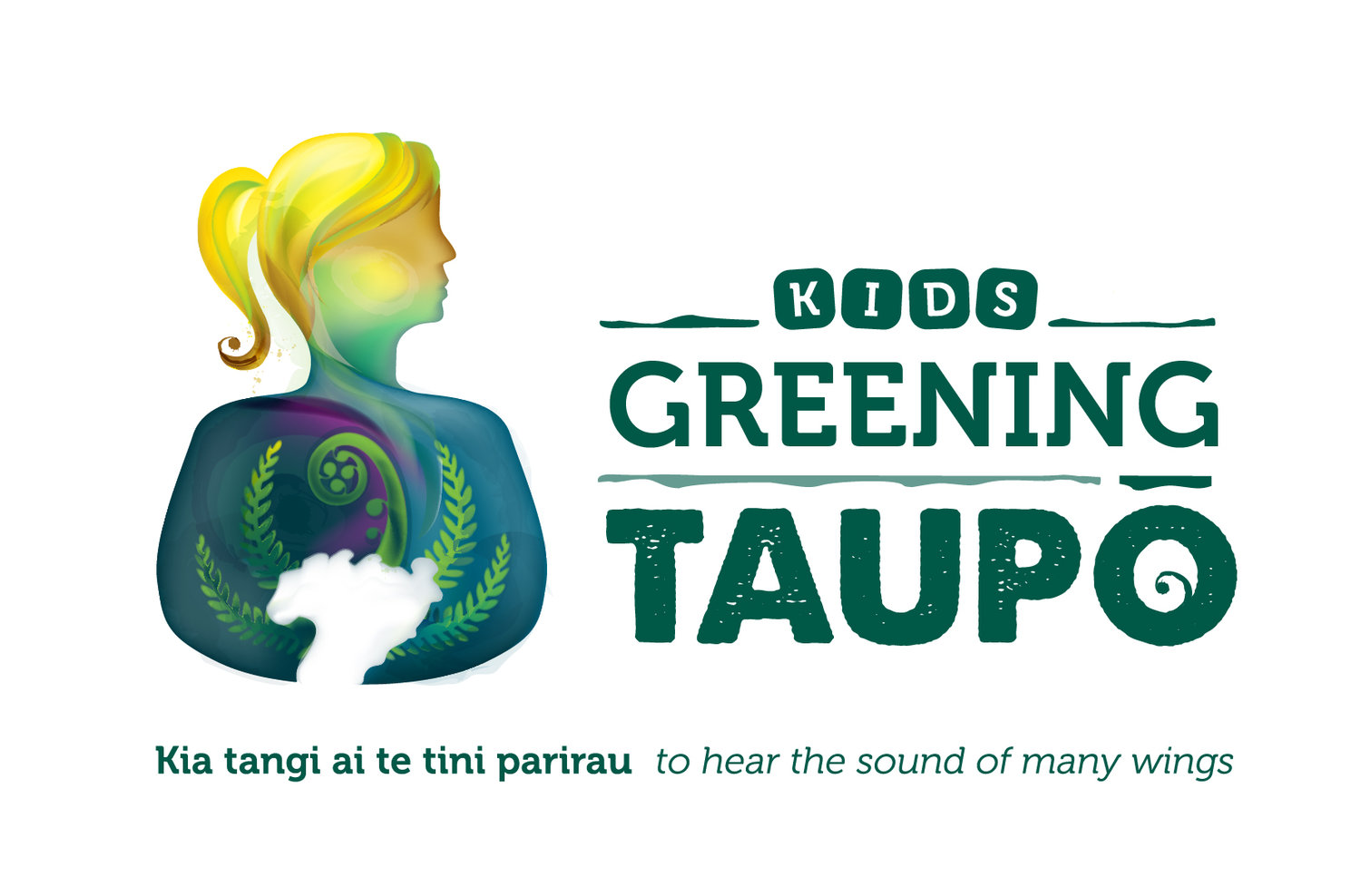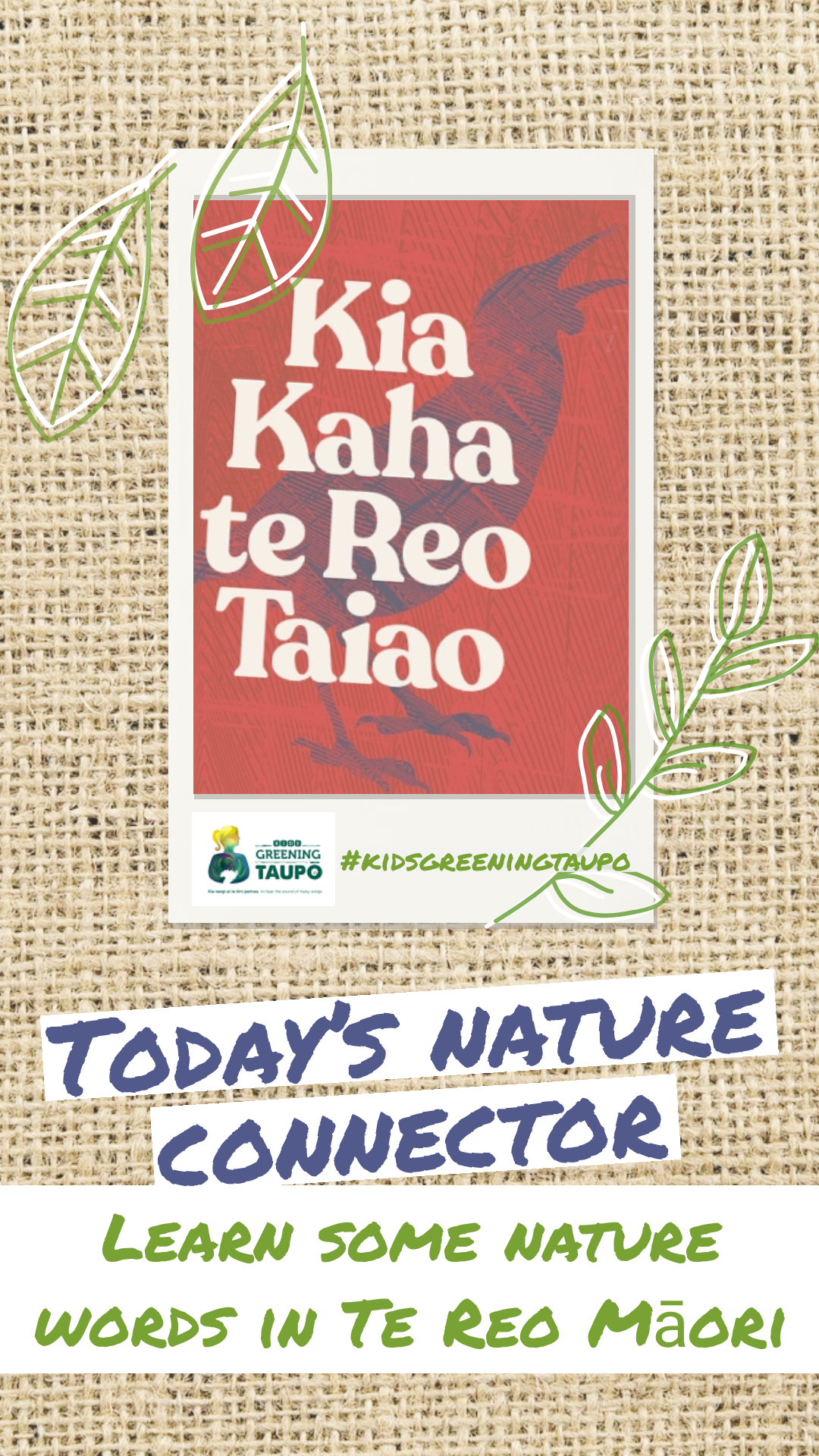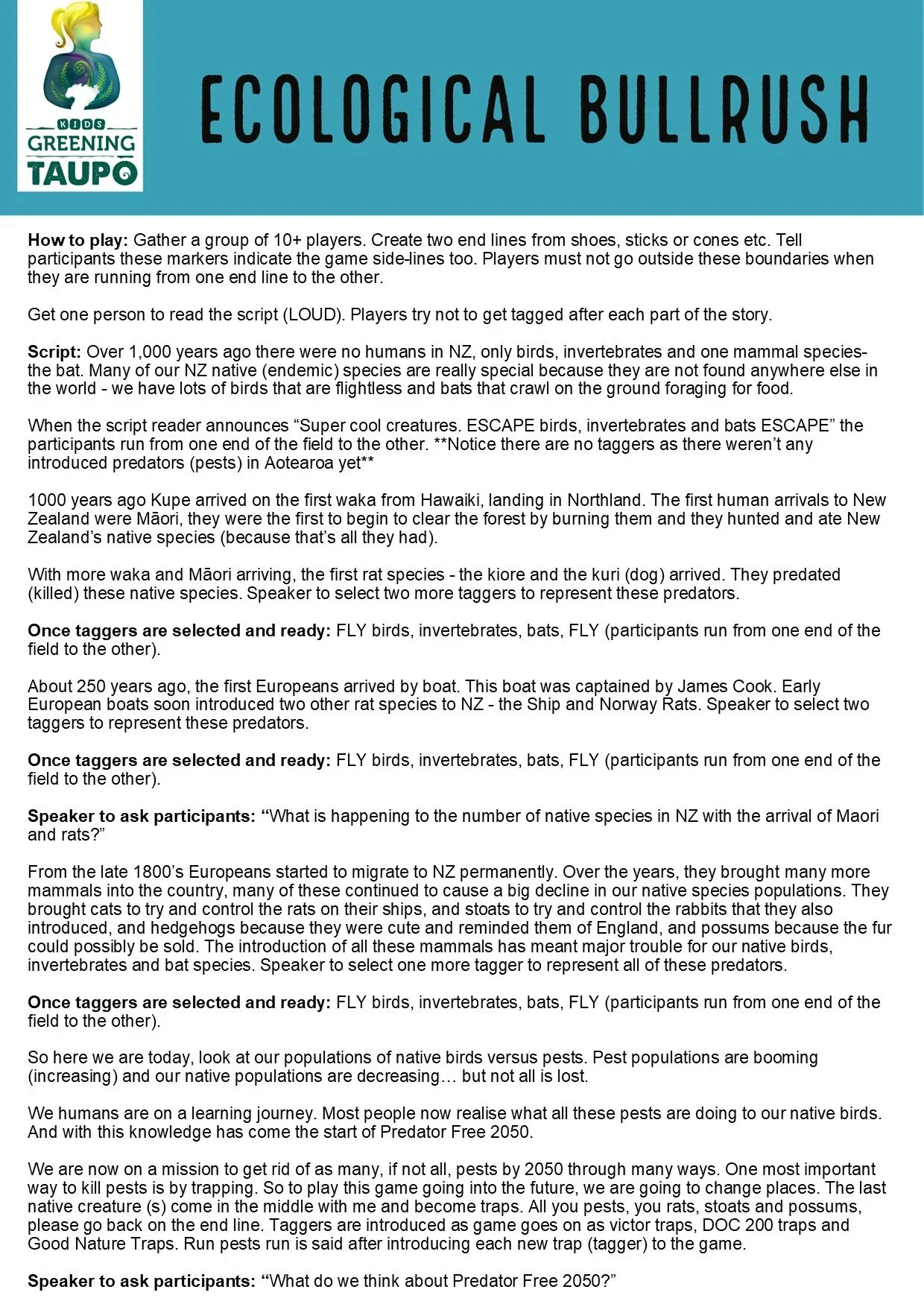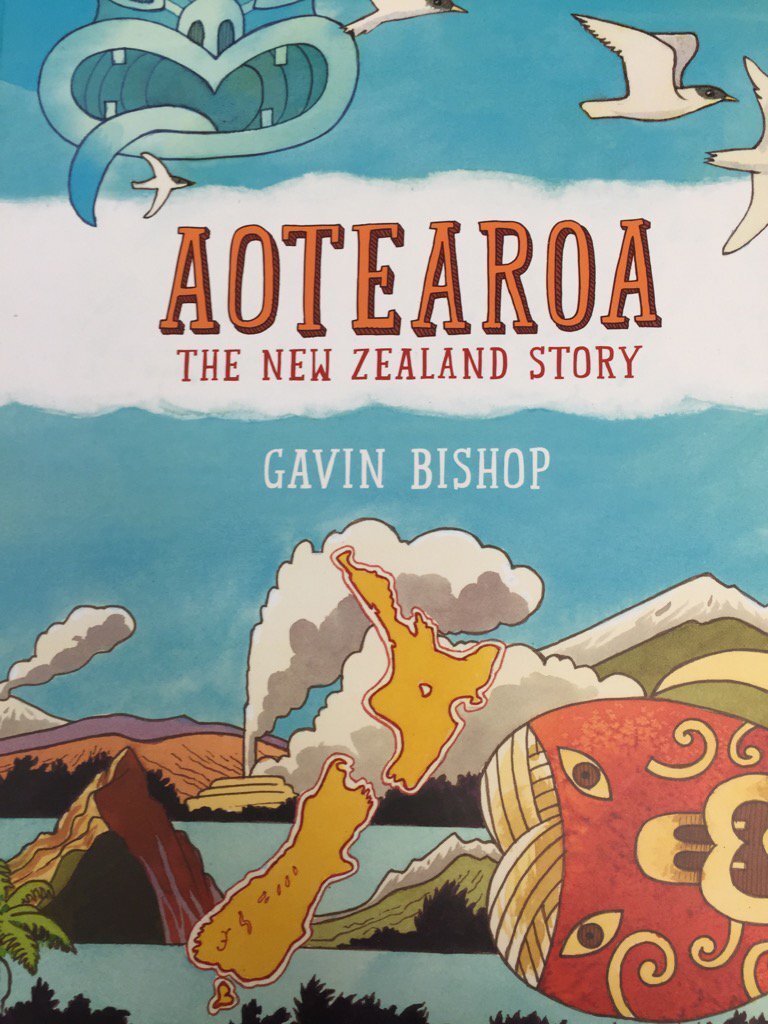Aotearoa and Conservation
Nau Mai! Welcome to the Kids Greening Taupo Online Nature Classroom!
This Online Nature Classroom is all about Aotearoa and Conservation
Let’s start off with A snapshot of New Zealand’s conservation history:
Over 1,000 years ago there were no humans in NZ, only birds, invertebrates and one mammal species - the bat. Many of our NZ native (endemic) species are really special because they are not found anywhere else in the world. We have lots of birds that are flightless and great at camouflage, bats that crawl on the ground foraging for food and many wonderful lizard species.
1000 years ago Kupe arrived on the first waka from Hawaiki, landing in Northland. The first human arrivals to New Zealand were Māori. They brought along the first rat species- the kiore.
Then, about 250 years ago, the first Europeans arrived by boat. Early Europeans soon introduced two other rat species to NZ- the Ship and Norway Rats.
From the late 1800’s Europeans started to migrate to NZ permanently. Over the years, they introduced many more predators into the country. They brought cats to try and control the rats on their ships, and stoats to try and control the rabbits that they also introduced. Hedgehogs because they were cute and reminded them of England, and possums because the fur could possibly be sold.
The introduction of all these mammals has meant major trouble for our native birds, invertebrates and bat species because before humans they only had predators that flew in the air (avian predators). Our native species were well adapted to these avian predators, many of them build nests on the ground, are well camouflaged when seen from above, and stay very still if they are threatened. Unfortunately, now with introduced predators on the ground such as stoats, rats, cats and hedgehogs, these adaptations aren’t very helpful and make our precious native animals (fauna) very easy food.
This is why you might hear the word pest used for those introduced species. Most of the introduced species mentioned above breed extremely fast and eat our native animal (fauna) and plant (flora) species too quickly for those native populations to recover- this is one of the main reasons we see native species go extinct. Learn more about the history of biodiversity in Aotearoa here and the impact of introduced browsers here.
In Aotearoa we are currently working towards becoming predator free. This is a goal which would see our native species populations start to recover from the impacts of pests, and go on to thrive.
In this week’s lesson about Aotearoa and Conservation you will be learning some Te Reo Māori: Aotearoa’s indigenous language, learning more about our country and diving into conservation topics such as pest identification and tracking.
We hope you enjoy this week’s Online Nature Classroom.
Biodiversity Fact Sheet for older students
Conservation introduction video
RESOURCES FOR TEACHERS/EDUCATORS:
History of Biodiversity in Aotearoa- resource with fantastic RNZ videos for tamariki
Introduced Browser Information, Resources, and Activities
A documentary film & podcast series exploring the notion of a Predator Free 2050 in Aotearoa. Made possible by the RNZ/NZOA Innovation Fund.
Our ‘Fill your Kete’ section will provide you with some fun nature activities based around our topic. As this topic is Aotearoa and Conservation, our activities are based around our country, conservation and culture.
LEARN SOME COMMON NATURE WORDS IN TE REO MĀORI AND PLAY ECOLOGICAL BULLRUSH
Today's Nature Connector is to teach yourself some common nature words in Te Reo Māori.
Go on an adventure around your garden or school and note down common things you find in nature such as flowers, plants, clouds, trees, and bugs.
See if you can find and learn those words in Te Reo Māori.
Here are some great resources to help:
Then get a group together and have a go at playing ecological bullrush! Read the script out and play just like regular bullrush. This is a great way to learn about the history of predators being introduced to Aotearoa while having some fun!
Identification of New Zealand pest species
How well do you know New Zealand’s pest species?
Learn all about the pests in Aotearoa here and see how many you know. You can print a poster of them here.
Foot and paw print identification: An important skill to have when using tracking tunnels for pest identification in your own backyard is telling pest foot and paw prints apart. Head over to the Pest Detectives website to learn the differences and then try the Activity Sheet here.
Did you know that you can also identify different species through their poo? Read about that and do the fun activity sheet!
Quiz: Why was I Introduced? Learn about why different mammals were introduced to Aotearoa through this quiz!
Pest tracking in your own backyard
Following on from the pest identification, make a pest tracking tunnel. A tracking tunnel does not trap any individual, it is simply a tunnel with paper, ink and an edible lure set down over several nights to track foot and paw prints of the critters that crawl through the tunnel. It will give you information about what is in your backyard and what kind of trap you might need to set.
Read here abut how to make a tracking tunnel and how to identify the prints that you get in it. Good luck!
CURIOSITY QUESTIONS
Inquiry: Do you know which animals are considered to be pests in New Zealand? Where did they come from? How did they get here? Do some research to find out the answers and then find out what you can do to help solve the problem. Go to the Predator Free NZ Website to help you with this research.
Do some persuasive writing: Hedgehogs are so cute! Do you think they are a pest? Should they be trapped? Why/Why not? Justify your answer! We would love to hear your answer to this question.
Here’s a video about hedgehogs and trapping.
Learn more about trapping here and then set a backyard trap!
KI TE PANUI/ TO READ
This ki te Panui section is based on Aotearoa, our culture and our unique wildlife.
Head to the section below for the read aloud story, Maui, and other Māori Legends- The Fish of Maui.
If you already have this book make sure you head outside to connect to nature whilst enjoying it!
After reading/listening to the book make sure to try the follow up mapping activity.
In each Online Nature Classroom we will give book suggestions along with at least one video read aloud.
This recommendation is Maui, and other Māori Legends- The Fish of Maui (from 6:00)
Watch the read aloud below-
Follow up activity: Mapping
We hope you enjoyed this week’s ki te Panui section.
Our final activity for this week’s Online Nature Classroom is mapping! Create or print a map of Aotearoa/New Zealand and highlight places that you connect to. Maybe these special places are where your tīpuna (ancestors) or whānau are from, or did you have a wonderful holiday in those places, maybe you have just heard stories about them and wish to visit one day.
To show this connection on the map you could for example: draw, glue pictures from magazines or write.
OTHER Activity And BOOK SUGGESTIONS (Aotearoa and conservation):
Find lots more activities and resources about introduced species here


















